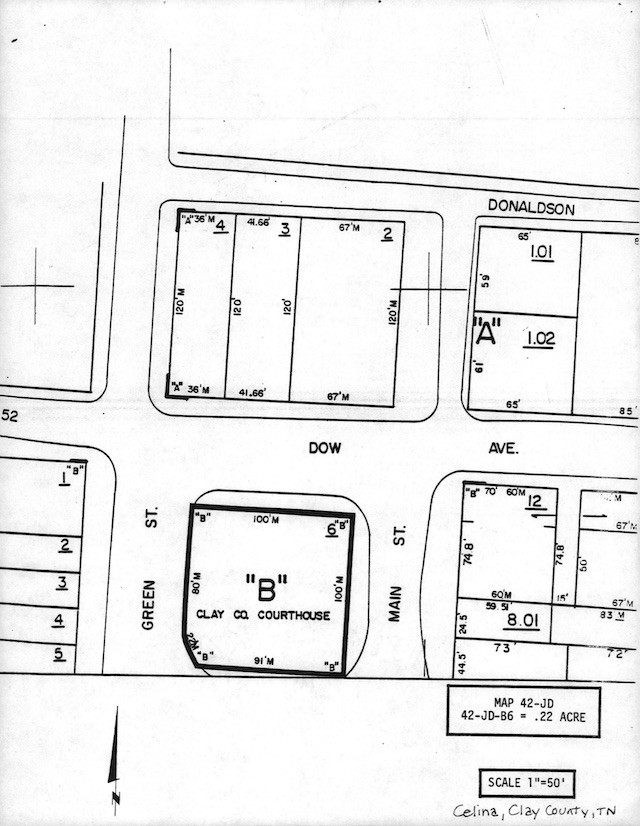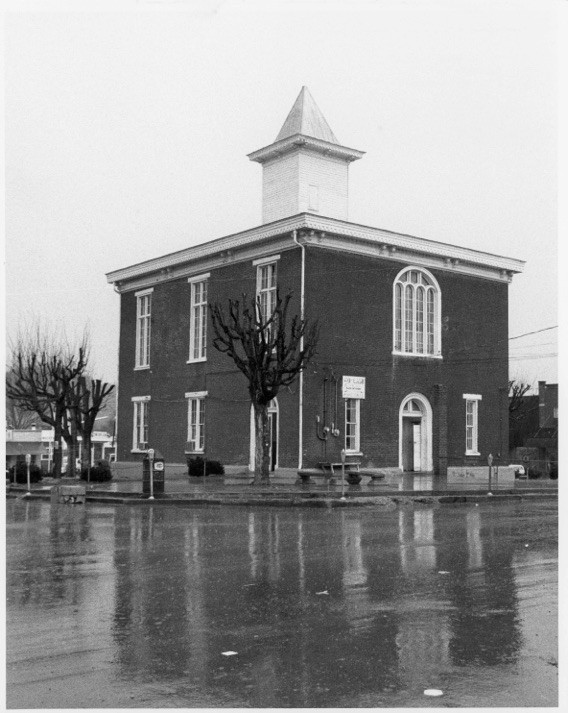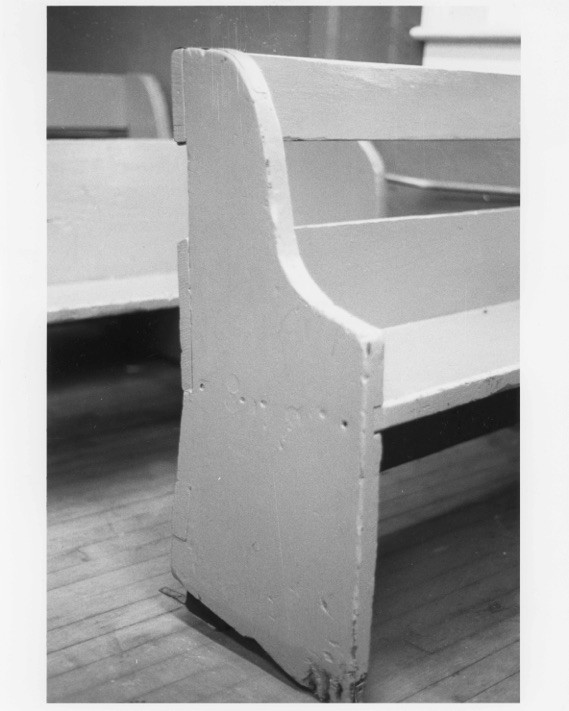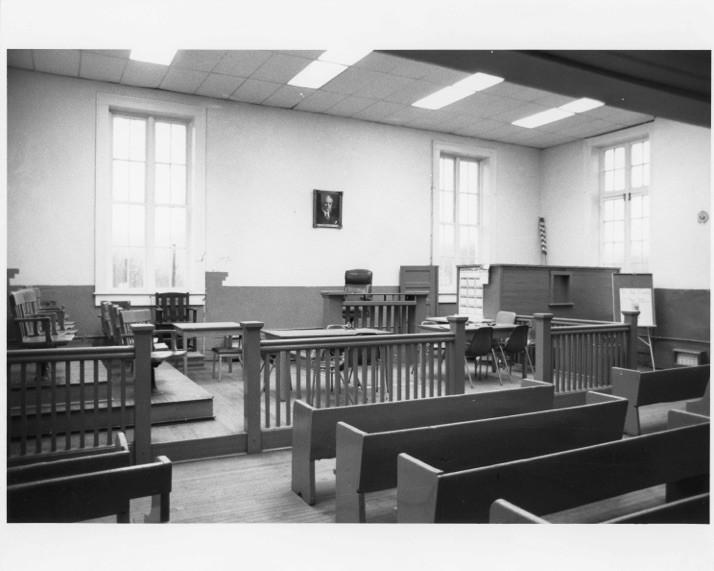story by Claudia Johnson
The Smith Family Companies are pleased to be part of the restoration of the windows in the historic courthouse of Clay County, Tennessee, where the family-owned business was founded in 1968.
Clay County recently received a grant from the State of Tennessee, which was matched by an appropriation by the Clay County Commission, to initiate the painstaking restoration of the windows of the building that was completed in 1873. Local businesses and individuals were given the chance to be part of the restoration project through donations.
“We felt it important to help preserve our county’s history,” said April Smith Patterson, explaining that The Smith Family Companies made a contribution to the window preservation fund.
Courthouse History
The Clay County Courthouse was built in 1873 and is the second oldest operating courthouse in Tennessee. It was placed on the National Register of Historic Places in 1977.
Clay County was established by the legislature in 1870 from portions of Jackson and Overton Counties. The first court was held at Butler’s Landing but the county seat was moved to Celina in 1872.
On April 27, 1872, contracts were awarded for the construction of public buildings. The contract for the courthouse was let to D. L. Dow of Cookeville for the amount of $9,999 and a $.30 per hundred tax levy was passed to pay for it. A log jail was constructed at the same time.
The courthouse, completed in 1873, has served with no major alterations as the governmental center of Clay County for almost 150 years. It is the first and only courthouse that Clay Countians have known.
Architecturally the courthouse is reflective of the social and economic conditions of the region. It is an architectural expression of the cultural context in which it exists. The dimensions and basic plan are similar to courthouses which were constructed by other counties in Tennessee in the 1820s and ’30s. It is also the smallest courthouse in the state, possessing few architectural frills but substantial workmanship and materials obviously meant to endure.
In this timber-rich region the pioneer tradition of wood building construction lingered well into the twentieth century, and the courthouse is one of the earliest brick structures in the county. That Clay Countians chose to construct their courthouse of brick is testimony to the civic pride existing in the newly incorporated county. This unadorned but solid building is a symbol of the pioneer virtues of self-reliance, frugality and foresight.
Distinguished personages associated with the building include Cordell Hull, Secretary of State under Franklin Delano Roosevelt, who began his practice of law in Celina, and Benton McMillan, governor of Tennessee from 1899 to 1903, who also began his career as a lawyer in Celina.
Description from the National Register of Historic Places, 1977
The Clay County Courthouse is a plain, two-story brick building. The brick is laid in common bond and was originally pointed and penciled, but the penciling, a thick, awkward stripe, is now mostly gone. Atop the building is a simple square cupola, originally containing a bell. The present roof, which replaced one of standing seam copper, is of asphalt shingles, except for the cupola which is of tin. The denticulated cornice is supported on paired brackets, eight on each side and equally spaced. The cupola cornice is similar. A false water table of poured concrete surrounds the building and obscures the foundation.
The plan of the building is rectangular and its dimensions are reminiscent of the courthouses constructed in other Tennessee counties in the 1820s and ’30s. On the first floor are located County offices and on the second is the tiny courtroom which still contains a number of original benches. This courtroom is the only portion of the building to have undergone alteration. The floor, which was originally sloped, is now level and a balcony has been added. The only other alteration was the removal of the coal stoves that provided heat for the courtroom and their replacement with gas heaters.

Jackie Cherry, Honest Abe’s plant manager, helped with the restoration project. Here is is sawing new Eastern Hemlock lumber.
Adopt a Window
Restoration of the windows is providing those who want to honor or memorialize a loved one the opportunity to do so.
Honest Abe’s founder, Doug Smith, who passed away from cancer in 2011, was a native Clay Countian with strong ties to the community, both personally and through his many business endeavors.
His widow, Janie Smith, and her children, Shane Smith and April Smith Patterson, along with their spouses and children adopted a window to restore in memory of Doug.
The marker under the restored window will read “Honest Abe Log Homes & The Doug Smith Family.”
“Our adopt a window program is a chance to be forever memorialized,” said Thomas Watson, the volunteer curator of the historic courthouse.
Watson said it has cost $15,000 to do six windows, and there are 23 left to go.
Call Watson at 931 243 3464 to make a donation or offer other assistance.

Clay County is included in the Cumberland Historic Byway tour. Learn more here.
The original benches which still remain are handmade and crudely constructed. They were originally cut to fit the earlier sloped floor. When the floor was altered the benches were adapted by the expedient of tacking blocks to the bottom of the legs and by this means leveling them. This makeshift arrangement is an amusing accent to the vernacular concept of the courthouse itself. It is as well indicative both of the regional culture and of the necessity imposed by economic conditions.
Historic Context
The area of the Upper Cumberland River in Tennessee is one of the most historic in the state. Coming down the river from the Cumberland Gap region, white explorers and long hunters arrived in the area as early as 1769, camping on the present site of Celina. Settlement of the area was slow, however, as most settlers were attracted to better lands in the Nashville basin. Due to this factor and to the difficulty of building roads in the hilly terrain and the resulting poor transportation other than by water, the area did not develop as did the rest of the state.
Isolated from the social and economic changes which occurred in Tennessee in the nineteenth century, the area of the upper Cumberland River developed and preserved a distinctive culture much more attuned to eighteenth or early nineteenth century values and modes of living than to those of a modern, industrial society.
Clay County was established by the legislature in 1870 from portions of Jackson and Overton Counties to relieve difficulties caused by the necessity of citizens of the area attending court in Livingston or Gainesboro. The county was named in honor of Henry Clay.

The Clay County Courthouse and the tract it sits on is listed in the National Register of Historic Places and protected by the U.S. Department of the Interior. This tract is found on the Clay County Property Tax Assessor Map 42-JD-Tract B6. The property contains 0.22 acres and is five-sided. Starting at the northwest corner, it runs 80′ south, thence 22′ southeast, thence 91′ east, thence 100′ north, thence 100′ west to the point of beginning.
The photos and map shown here are from the 1977 National Register of Historic Places nomination.






